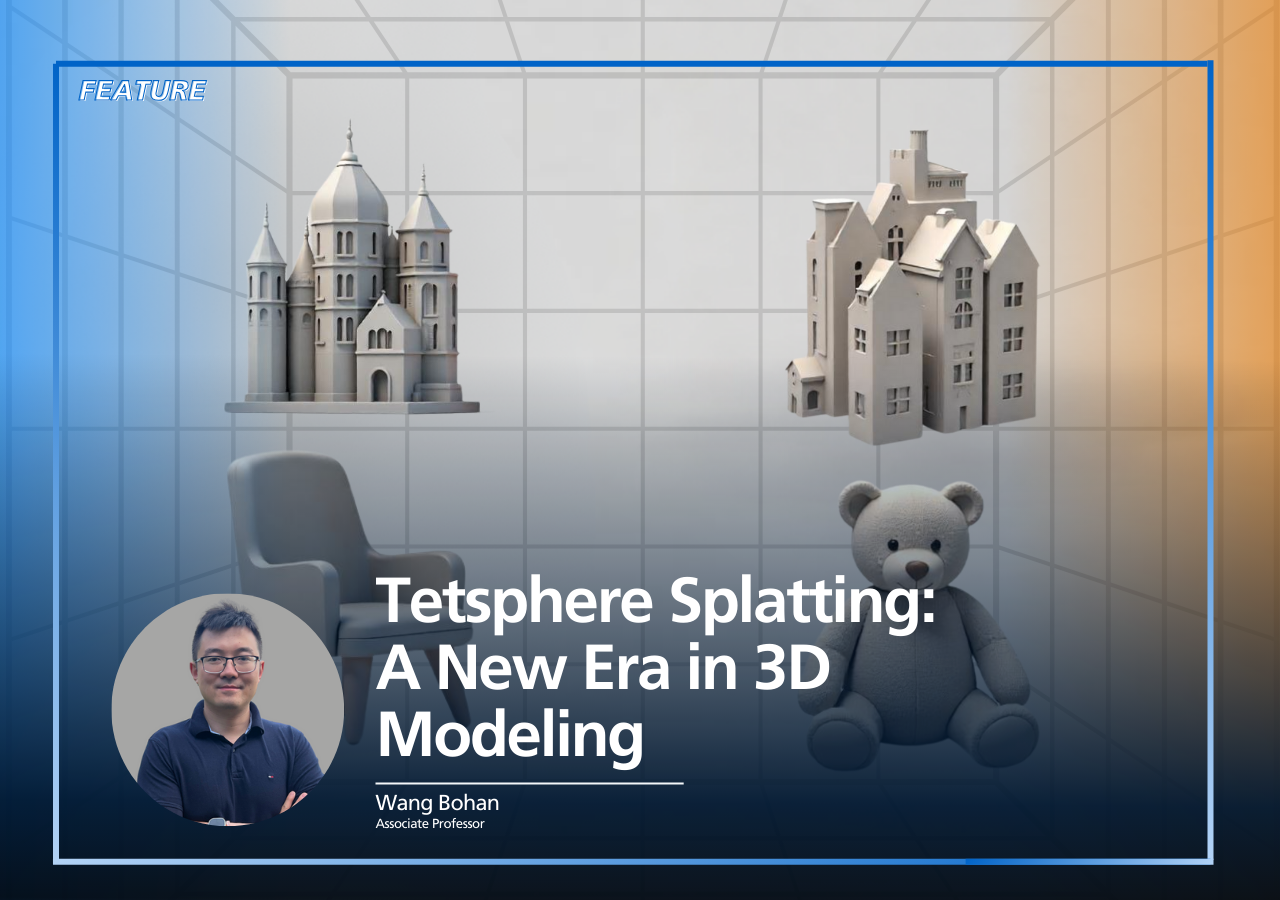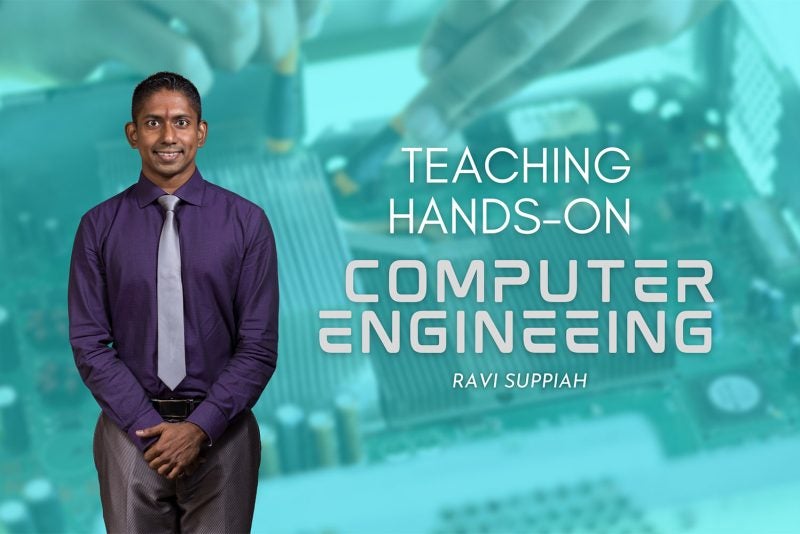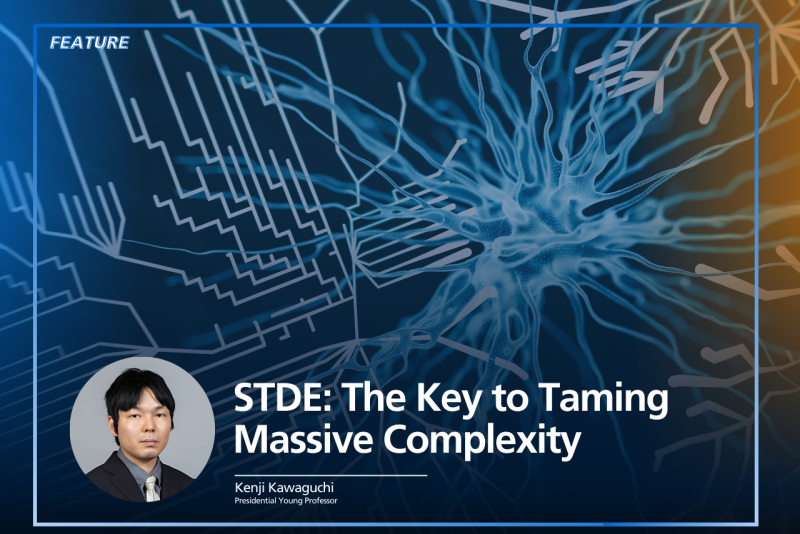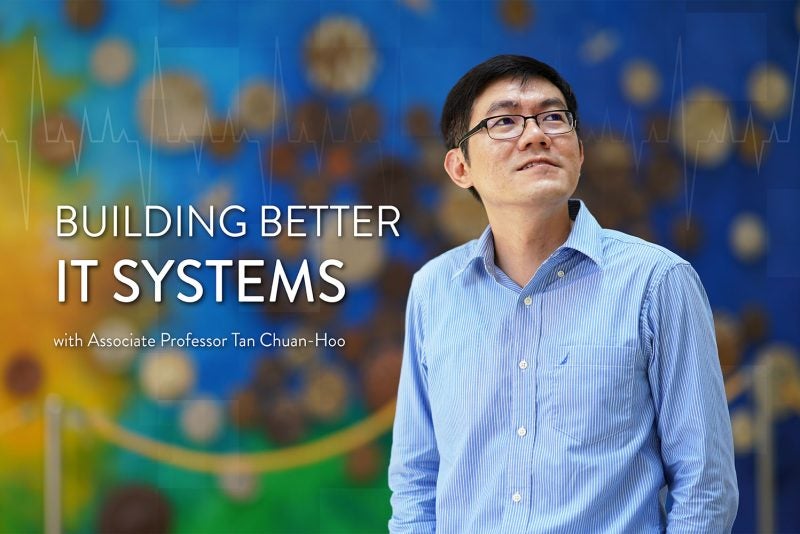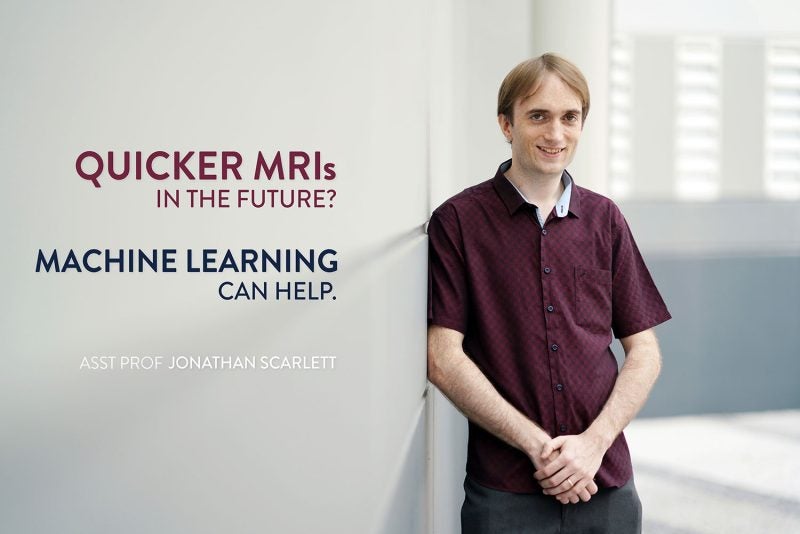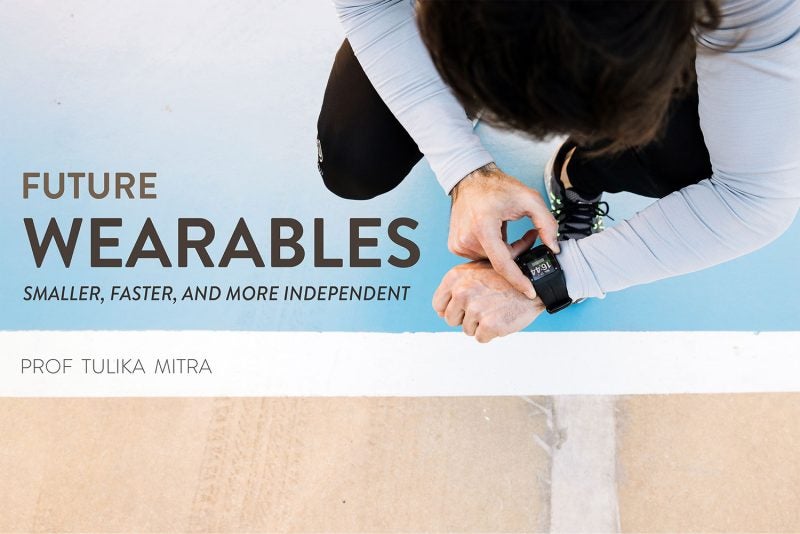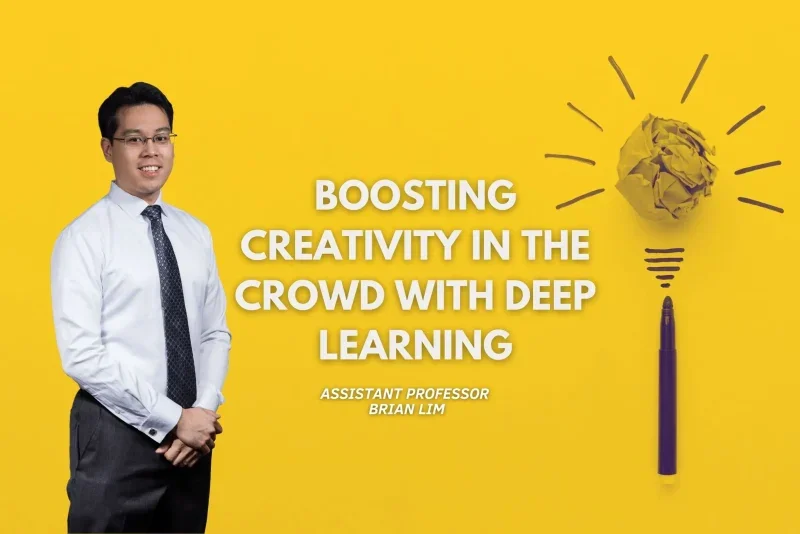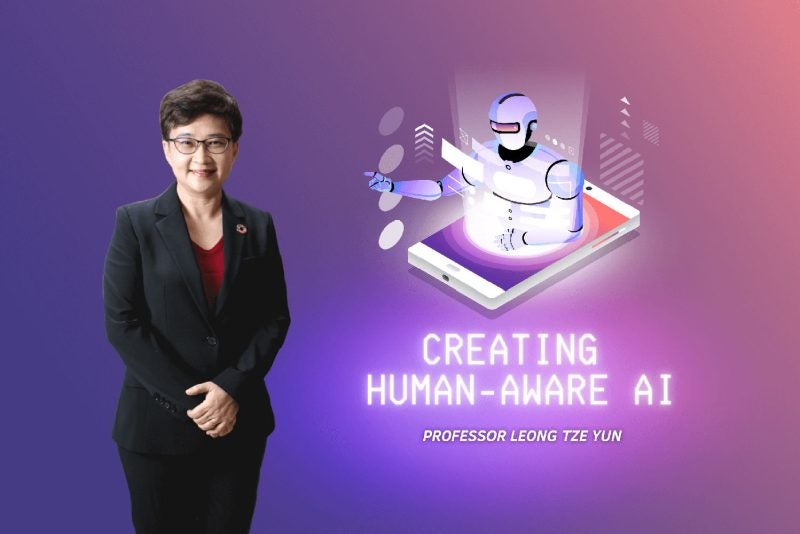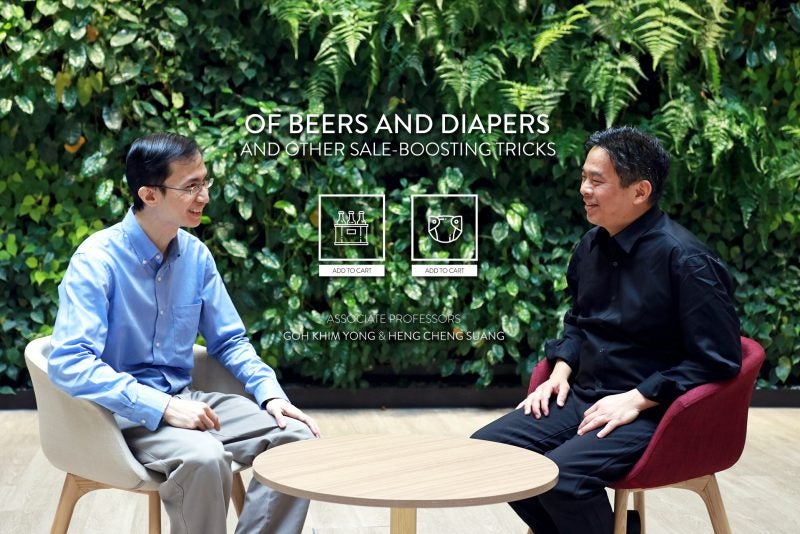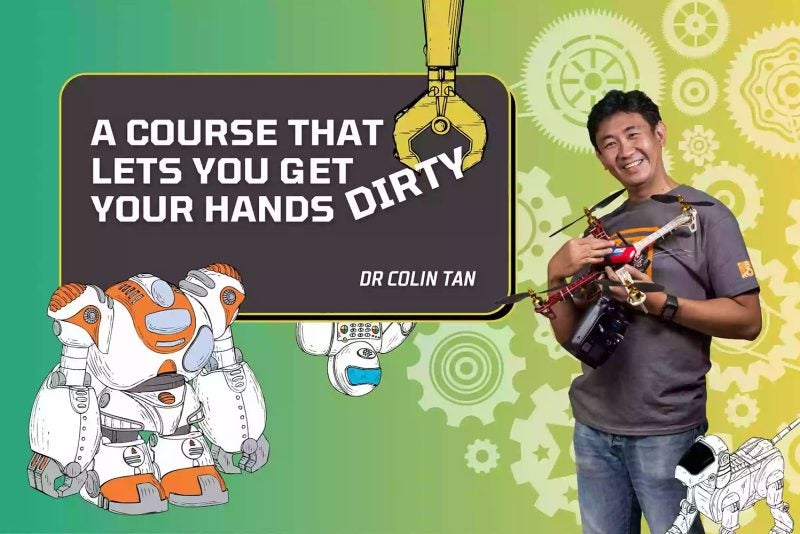In the realm of digital design and visualisation, 3D modelling has become an indispensable tool. From video games to virtual reality, from architectural renderings to advanced manufacturing, the ability to accurately capture the shape and details of real or imagined objects has profound implications for countless industries. Yet as familiar as 3D modelling may seem—think of all the CGI creatures in films or the meticulously rendered buildings in ads—the underlying methods for how we represent these shapes are constantly evolving.
Enter Tetsphere Splatting, a cutting-edge research approach developed by Assistant Professor Wang Bohan, one of NUS Computing’s newest faculty members, that promises to transform how we build, manipulate, and perfect 3D models. At first glance, the title of the research paper recently accepted for presentation at the 2025 International Conference on Learning Representations (ICLR 2025)—“Tetsphere Splatting: Representing High-Quality Geometry with Lagrangian Volumetric Meshes”—may sound dense and technical. However, the concept can be likened to throwing tiny spheres of virtual clay (or “tetspheres”) onto a digital canvas, then deforming them to match the contours and intricacies of the object being modelled. This approach addresses fundamental challenges that have long plagued traditional 3D modelling methods, particularly the problem of modelling 3D objects with arbitrary topology while still preserving high quality and fine-grained detail.
Why does this research matter for the future? Because 3D modelling sits at the heart of a rapidly shifting technological landscape. Industries such as entertainment, engineering, manufacturing, and even education rely on ever more precise and flexible models. A technique that can deliver superior detail, handle complex shapes gracefully, and remain computationally efficient could redefine entire workflows—from how we design complex mechanical parts to how we create immersive digital environments, whether it be for entertainment, education or engineering. As we move towards a world that blends the digital and physical realms more seamlessly—through advancements like 3D printing, virtual and augmented reality, and complex simulations—technologies like Tetsphere Splatting can help catalyse this transformation.
From Grids to Droplets: Two Fundamental Approaches
To understand why Tetsphere Splatting is such an important step forward, it helps to grasp the basics of how 3D shapes are usually represented. Broadly, we can compare two main approaches: Eulerian and Lagrangian.
Eulerian Approach:
Picture a flowing river. The Eulerian viewpoint sets up stationary sensors in a grid formation across the river’s path to measure where the water moves. Applied to 3D modelling, that translates into dividing a scene into a fixed grid—imagine a large 3D checkerboard of tiny cubes. Each cube holds information about whether it belongs to the object (e.g., the shape of a car) or the empty surrounding space. This method is relatively straightforward and has been widely used in fields like fluid simulation. However, its fixed nature can oftentimes become a serious drawback. If you want high levels of detail, you need an extremely dense grid, which skyrockets computational demands. It’s like painting a detailed portrait with a very thick brush—you need a lot of paint, time, and effort to get the fine details right.
Lagrangian Approach:
Returning to the river analogy, the Lagrangian method tracks individual droplets as they flow along. In 3D modelling, this translates to focusing on small building blocks—like clusters of tiny shapes—and seeing how they move and deform. Tetsphere Splatting falls into this category. The “tetsphere” is a sphere subdivided into pyramidal shapes called tetrahedrons. Each tetsphere can be repositioned and deformed to represent a piece of the overall object. This approach can more naturally capture intricate details because the modelling method follows the surface’s shape, rather than forcing the shape to conform to a rigid grid.
Tetspheres as Digital Clay
So what exactly is a tetsphere, and how does the “splatting” happen? Imagine having hundreds or thousands of tiny balls made up of tetrahedrons. You’re “throwing” these spheres onto a digital model, allowing them to land and then deform to match the reference shape. In practice, a computer algorithm iterates through several steps:
-
Initialisation: The tetspheres are placed in the scene, each one representing a small region of space.
-
Rendering Loss Optimisation: The algorithm compares the partial 3D reconstruction against real-world reference images or data. If there’s a mismatch—say the model’s surface is too far out or not detailed enough—tetspheres are nudged, reshaped, or merged until the digital sculpture aligns more closely with the actual object.
-
Geometric Energy Constraints: This is where mathematical tools like biharmonic energy come into play. The idea is to keep the deformation of each tetsphere as smooth and natural as possible, preventing sharp distortions or chaotic reshuffling of surface points.
-
Non-Inversion Constraint: This prevents the tetspheres from folding inside out, which would create bizarre topological errors or holes in the final model.
Through this process, Tetsphere Splatting can hone in on extremely fine details while ensuring that the surface remains smooth. In effect, it’s like having a digital sculptor’s hands working in tandem with a data-driven approach that locks onto the target shape.
Traditional modelling methods often involve extensive data post-processing or a reliance on high-resolution grids to capture micro details. This not only increases computational cost but can still result in gaps and rough edges when working with highly intricate shapes. Tetsphere Splatting, by contrast, has demonstrated remarkable finesse in reconstructing objects that typically challenge conventional systems.
Ongoing Challenges: Perfecting the Clay
Like any pioneering technology, Tetsphere Splatting has its share of limitations. One challenge is that while the final model often looks unified, it’s technically composed of many smaller spheres (each subdivided into tetrahedrons). For certain applications—especially those requiring straightforward mesh editing—having one single seamless piece is preferable. Wang and his team are actively exploring ways to merge or optimise these tetspheres into a more contiguous framework.
Additionally, while the method excels at preserving general topology (making sure a doughnut shape has its hole, or a pretzel keeps its loops), there can still be minor inaccuracies when dealing with especially elaborate or partially occluded regions. Complex shapes with interwoven parts, for example, may require more sophisticated deformation constraints or additional data from different angles to guarantee pinpoint accuracy.
Despite these hurdles, the core strengths of Tetsphere Splatting—high-resolution detail, relatively efficient computation, and robust surface generation—offer a strong foundation for ongoing refinement. As the technique matures, we can expect to see improvements that reduce fragmentation, boost topological precision, and streamline the editing workflow for end users.
Pushing the Boundaries: Potential Applications
Where could Tetsphere Splatting make the biggest impact? The possibilities are vast, cutting across multiple sectors:
-
Entertainment & Gaming: Modern video games and digital films demand photorealistic characters, props, and environments. Tetsphere Splatting offers a more automated path to capturing real-world objects or sculpted maquettes as fully realised 3D models. This improved fidelity could mean more immersive experiences and streamlined production pipelines, from AAA game studios to independent film makers.
-
Architecture & Construction: In architectural design, every minute detail—angle, bevel, texture—can drastically affect the aesthetics and functionality of a building. Tetsphere Splatting may eventually empower architects to produce quick yet highly detailed prototypes, swapping out features in real time. This includes complicated surfaces like curved façades, ornate column capitals, and intricate interior details, all captured with a fraction of the usual computational cost.
-
Manufacturing & Prototyping: Imagine being able to rapidly prototype mechanical parts—gears, valves, entire assemblies—where each small rivet and groove is accurately recreated in 3D. With Tetsphere Splatting, there would be fewer missed details during the design stage. This can save time and money, ensuring that 3D-printed or CNC-manufactured parts match the designer’s intent without repeated rounds of correction.
-
Education & Cultural Heritage: Museums and research institutions are increasingly embracing 3D scanning and modelling to archive historical artefacts and fossils. A method like Tetsphere Splatting can create extremely accurate digital replicas for online exhibitions, interactive lessons, or remote research collaborations. Students could virtually “handle” artefacts that would otherwise be too fragile or rare to touch, unlocking new ways to learn about our shared heritage.
-
Medical & Scientific Visualisation: Accurate anatomical models are crucial in fields like surgical planning or biological research. By integrating Tetsphere Splatting with MRI or CT scan data, we could generate high-resolution models of tissues and organs, aiding doctors in planning complex surgeries or scientists in studying biological structures. The method’s emphasis on topological correctness ensures that hollow structures or branching vessels remain intact, a necessity for detailed biomedical analysis.
Shaping Tomorrow’s 3D Landscape
Tetsphere Splatting stands at the forefront of a broader shift in digital modelling, one that aims to merge unparalleled detail with robust, versatile geometry. Its Lagrangian, sphere-based approach points to a future where professionals from various disciplines—engineering, architecture, entertainment, cultural preservation, and more—can craft complex 3D forms at will, without hitting the usual bottlenecks of grid-based resolution or laborious manual sculpting.
Looking ahead, the technology’s potential use cases are almost limitless. In architecture, it could enable real-time, high-fidelity feedback loops where structural changes and aesthetic tweaks are visualised instantly. In manufacturing, it might be integrated into fully automated “design and test” cycles, slashing product development timelines. In virtual reality and gaming, Tetsphere Splatting could supercharge world-building tools, letting creators design immersive environments filled with rich detail that adapt dynamically to player interactions. In education and research, intricate digital reproductions of fossils, artefacts, and even microscopic biological structures could be made widely available, democratising access to otherwise inaccessible items.
Perhaps most exciting is the potential for broader democratisation. As researchers continue to refine Tetsphere Splatting—making it more user-friendly, computationally efficient, and integrated with popular 3D tools—amateurs and hobbyists could also embrace it. Imagine a future where anyone with a basic computer can capture real-world objects in precise 3D detail, manipulate or animate them, and share their creations worldwide. The same way personal computers revolutionised word processing and digital art, Tetsphere Splatting and similar technologies may lower the barriers to entry for high-quality 3D modelling.
We are witnessing the early days of this breakthrough, much like the infancy of smartphones or the first forays into CGI graphics decades ago.

